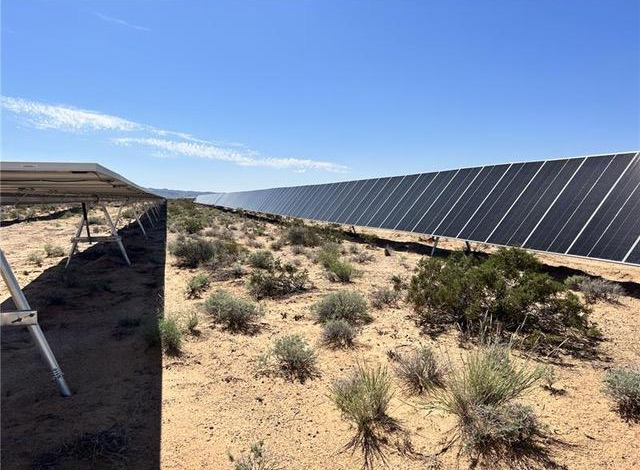Millions of Acres Added for Solar Power Projects on Public Land

.png?1725048480)
Solar energy panels on public land in Nevada.
Photo Credit: BLM Southern Nevada District Office
The U.S. Bureau of Land Management has released a final plan to expand the number and scope of utility-scale solar energy projects on public lands that would add 9 million acres in five more western states—for a total of more than 31 million acres of potential development.
The plan will guide agency management of solar projects going forward, driving development closer to transmission lines or on previously disturbed lands and avoiding protected lands, sensitive cultural resources and important wildlife habitat, said the bureau, a unit of the U.S. Interior Dept.
New states added are Idaho, Montana, Oregon, Washington and Wyoming. The original states covered were Arizona, California, Colorado, Nevada, New Mexico and Utah.
To date, 40 renewables projects—a mix of solar, geothermal and transmission connection—have been permitted on public lands, with a total capacity of 29 GW. The new power generation potential surpasses the target outlined in a January 2021 executive order by President Joe Biden calling for 25 GW permitted by 2025.
The final plan, which follows one released in January as a draft, incorporates the input of industry and environmental stakeholders and seeks to balance development and preservation of sensitive areas, the bureau said. It is formally called the Utility-Scale Solar Energy Programmatic Environmental Impact Statement.
Opponents will have 30 days to protest the updated solar plan, published Aug. 30 in the Federal Register.
The agency had not updated its plan laying out criteria for siting new solar projects on public land since 2012, noting advancements in technology, greater demand for more development to meet administration climate goals and a significant uptick in the number of project applications from developers in states not included before.
But the final plan does not authorize specific projects, with future ones needing to undergo site-specific environmental reviews.
“The updated Western Solar Plan will help build modern, resilient energy infrastructure that creates a strong clean energy economy and protects our communities from the worsening impacts of climate change,” said Steve Feldgus, principal deputy assistant Interior secretary for land and minerals management. He noted the plan includes “extensive planning and collaboration” to permit projects faster, “avoiding conflicts and striking the right balance as we advance clean energy.”
The move to avoid potential conflicts with local land uses would help avoid delays that have stalled other projects, said agency Director Tracy Stone-Manning.
Environmental groups such as the League of Conservation Voters and Natural Resources Defense Council support the plan, which they said will spur “responsible development” of non-fossil-fuel energy sources.
Pam is ENR’s senior editor for government coverage, focusing on federal environmental and labor issues as they relate to the construction industry. She has a degree in journalism and an M.A. in writing fiction, and has worked previously as both an editor at ENR (2007-2016) and as a freelancer for a variety of publications and clients. One of her favorite gigs involved writing about stars, black holes and the mysteries of the universe for NASA.




